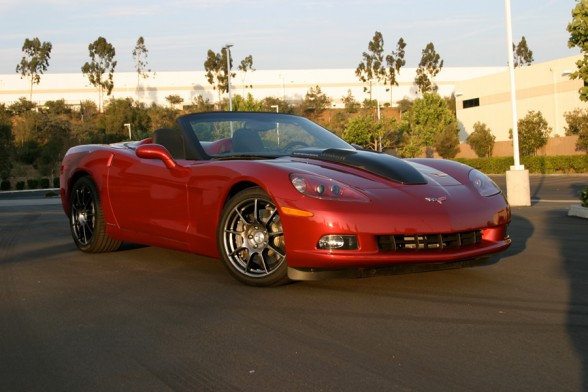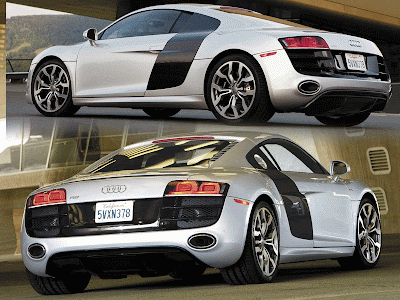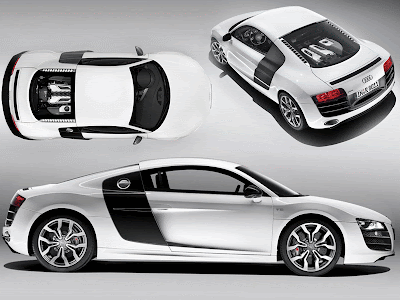
Approaching the 2010 Lincoln MKT for the first time is like meeting a blind date. You've been told by friends she has a good personality, which immediately has you wondering what she looks like. From a distance you see your fears confirmed: She's a big girl with a toothy grin and a weird hump. If super models are your thing, you'll be disappointed by this three-row crossover sitting alone in the corner with a red carnation in her hair. But if you meet her with an open mind, you'll find that a good personality goes a long way.
It's our job to go on blind dates with vehicles before you do, and despite the MKT's controversial design, we're glad we sat down and got to know her. Now, if you can't get over seeing a beached whale in your driveway every morning, stop reading; no twin-turbo direct-inject V6 engine, advanced infotainment features or luxurious appointments will change your mind. We'll agree to disagree and you'll probably pass judgment on the MKT from afar, not even giving it the courtesy of a test drive before shacking up with that German model. Will you regret not getting to know the MKT like we did? Read on to find out.
The Lincoln MKT has a sister – the Ford Flex. Both models are based on Ford's D4 full-size CUV platform and built in Oakville, Ontario. In past years, that would mean the Flex and MKT were near identical twins, the Lincoln version merely a rebadged interpretation of the Ford, with a new grille and more upscale materials. The MKT, however, is more like a big sister to the Flex – still related but not its twin.
Ford calls it a "differentiated top-hat strategy." The two vehicles share the same platform, suspension, engines and other mechanicals, but everything you can see and touch without the use of a wrench is unique to both. Lincoln designers, perhaps restless after being tethered to Ford designs for so long, went a little nuts.



We count three design elements that make the MKT controversial, and we'll start with that grille. It's called a "dual wing" in Lincoln parlance and can also be seen on the MKZ, MKS and newly redesigned 2011 MKX. We're all for establishing a consistent brand identity, but someone should've had the foresight to consider what enlarging Lincoln's new corporate face by 125 percent would look like. Now we know: Not so good. It's a shame too, as the rest of the front fascia is clean – elegant even – with interesting details like the centered crease that runs forward from the base of the windshield, splits the Lincoln logo and terminates in the undercarriage. But who notices stuff like that when faced with the grille's mighty wingspan?
The other two off-putting design elements are an upward kink in the rear fender and that forward-leaning rear hatch. Whether or not you like the kink is up to you. We don't really understand its purpose, but it doesn't ruin the design. The canted hatch, however, steals valuable cargo space and headroom from third-row passengers. There's only 17.9 cubic feet of cargo space with the third row upright, though that jumps to 75.9 when it's stowed. The Flex, however, with its right angles and slab sides, is easily a more practical crossover because the MKT makes sacrifices at the altar of the aesthetic gods.




Aside from those three distracting elements, Lincoln designers did well making the MKT's outward appearance live up to its more-expensive-than-Flex price tag. Our tester's White Platinum Metallic Tri-Coat paint was as flawless as a pearl, while the lack of cladding, sparing use of chrome and simple surfaces reminded us of contemporary furniture design. The MKT would be right at home in a SoHo loft parked next to a $5,000 Italian sofa.
Once you get past the exterior (if you can), an interior awaits that's above reproach. The materials are first rate, featuring stitched leather on the padded dash, center console and doors. Real Olive Ash wood trim cuts across the middle and also tops the big multifunction steering wheel, and those Canyon-colored leather seats are supremely comfortable and supportive with 12-way adjustability for both the driver and front seat passenger, as well as being heated and cooled.




While two second-row captain's chairs are an option, we prefer the 60/40 split bench our tester was equipped with. The third row can fit two people in a pinch, but we'd rather stuff a third in the middle before banishing anyone to the back. Regardless of which seat you're assigned, Lincoln's optional Panoramic Vista Roof bathes the whole interior in soft light, which helps neutralize claustrophobia for passengers who might feel closed in by the vehicle's high beltline.
Functionally, the MKT carries forward the segment-leading infotainment systems that are now a huge selling point for Ford. This current-generation system features SYNC, SIRIUS Satellite Radio with Travel Link, a 10 GB HDD, USB and auxiliary inputs, along with Bluetooth connectivity. We're particularly impressed that most Ford and Lincoln vehicles equipped with SYNC now also handle Bluetooth audio. That means in addition to routing calls through the vehicle, a Bluetooth-compatible music player can also play tunes through the THX-certified stereo without plugging in. All is controlled using a big touchscreen with sharp graphics and an easy-to-understand interface that also doubles as a monitor for the rear view camera, which you're gonna need when backing this big girl up.




On the topic of not hitting things, the MKT can be had with two technologies that help you avoid rearranging its sheetmetal. The first is the Blind Spot Monitoring System, an admittedly ubiquitous piece of tech in large vehicles these days, but a helpful one in the MKT with its rather large blind spots. The second is Active Park Assist, another technology you can find in other high-end automobiles, but the Lincoln's system is by far the best we've used. Simply pull the MKT alongside an open parking spot on the street, hit the APA button and inch forward. When the system senses there's enough room to parallel park, put the vehicle in Reverse and let go of the steering wheel. You're on braking duty, but the system will steer and park this barge perfectly every time.
Low-speed maneuvers are one thing, but how does the MKT perform above parking lot speeds? In a word, remarkably. For one, our tester's push button starter fires up Ford's 3.5-liter EcoBoost V6 producing 355 horsepower at 5,700 rpm and 350 pound-feet of torque at just 3,500 rpm. We've sampled this engine in the Ford Taurus SHO and Flex, as well as the Lincoln MKS sedan. It's a superlative mill using twin turbos and direct injection to create a power band as deep as Warren Buffet's pockets. With the EcoBoost V6, you wouldn't know the MKT with all-wheel drive weighs a smidge over 5,000 pounds because effortless power is its calling card, just like a larger V8. The upside is better fuel mileage: We experienced a range of between 19–22 mpg, which is at the hind of the EPA's 16 city/22 highway mpg estimate. The downside: no V8 vibrations or acoustics.

The MKT uses a six-speed transmission with paddle shifters to carve the EcoBoost's output into maximum thrust chunks. Shifts are smooth and transparent while dropping kids off at soccer practice and making back-and-forth trips to Home Depot, but those oddly shaped paddle are there in case manual control is required. Rare among flappy paddles, up and down shifts are activated on the same paddle, not split on either side. Pull back on either paddle for upshifts and push forward with either thumb for downshifts. It takes some getting used to, but manually controlling shifts means the engine will be at your beck and call rather than preoccupied with maximizing fuel economy.
We were all set to comment on the MKT's handling, steering and breaking in the context of a long road trip we had planned that would rack up over 800 miles, mostly on the highway. It would've been what you expect with remarks about how the MKT goes great in a straight line and soaks up expansion joints like a Tempur-Pedic mattress. All that's true, but a navigation glitch by yours truly meant the nav system plotted our route without the benefit of high- and byways. A blessing in disguise, we road tripped from Cleveland to D.C. on back roads only and had a rare chance to flog the MKT on some of Pennsylvania's windiest roads.


While using the MKT more like a Mustang than the three-row crossover it is, we isolated the one difference that makes it a better driving vehicle than competitors like the Audi Q7 above or Buick Enclave beneath: it's low. Other large CUVs have enough token ground clearance to pretend that "off road" is some place they're actually going to explore, but the MKT drops that pretense and hunkers down over its 20-inch wheels wearing P255/45VR20 all-season rubber. That lower center of gravity combined with all-wheel drive, big contact patches and enough ribbon-smooth pavement to wrap the Keystone state in a bow turned out to be a delicious recipe for surprisingly fun driving.
Fortunately, the MKT's power-assisted rack-and-pinion steering didn't spoil our fun in Pennsylvania back country. Heavy assist is present at low speeds to help turn the tiller of this 5,000+ pound CUV, but as speed climbs that buffer begins to fade and you can feel the friction between the road and tires. This feedback helps your fingers know which direction the wheels are pointed instead of just using your eyes. The four-wheel disc brakes kept up as well, though their mushy feel didn't always inspire confidence even if they did arrest motion well enough when asked.

Are we saying that the MKT is the best handling big CUV out there? No, we're saying that if you require three rows of seating and like the finer things in life, there aren't many better handling large luxury crossovers available, short of a much more expensive and narrowly focused BMW X5 M. In other words, if you want a luxury CUV that feels more like a wagon than a wannabe 'ute, get the MKT.
There's also the issue of price, and the MKT scores well here with a $49,200 base MSRP for the EcoBoost model. When equipped with comparatively powerful V8 engines, the German competition (Audi Q7, BMW X5 and Mercedes-Benz GL) all start above $55,000 with less standard equipment. Our MKT EcoBoost tester came with a $4,000 Elite Package that adds navigation, a THX-certified stereo, the Panoramic Vista Roof and Blind Spot Monitoring System. The only other option we had was Active Park Assist for $595, though Adaptive Cruise Control is also available for $1,295. Even still, the MKT EcoBoost tops out fully loaded where its Germanic competition is just starting.
So our blind date with the 2010 Lincoln MKT turned into a week-long getaway where the journey was more enjoyable than the destination. It does everything well that you'd except, and proved to be extremely comfortable, luxurious and technologically advanced enough to impress the editors of Engadget. But we were most surprised with how well this lady dances, something we would never have known if we saw her sitting alone in the corner and made a B-line for the door.



























